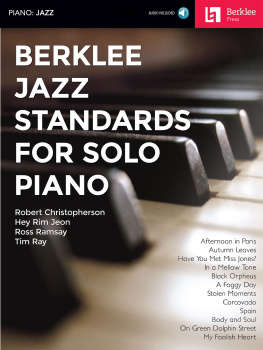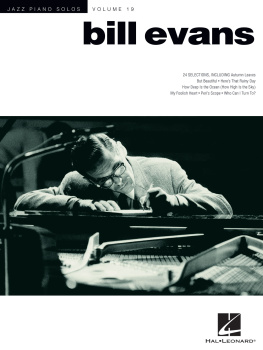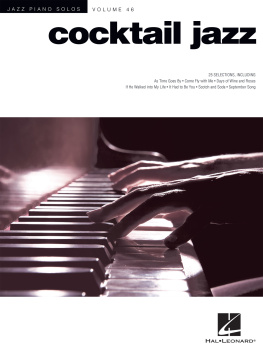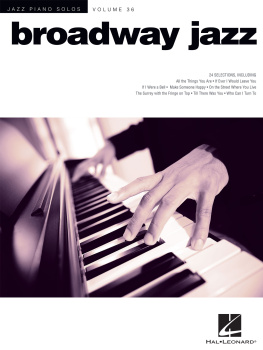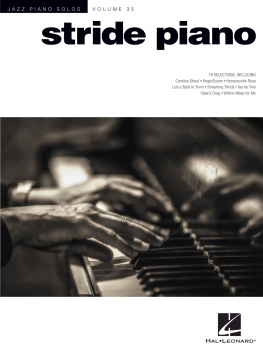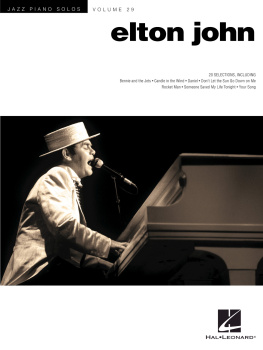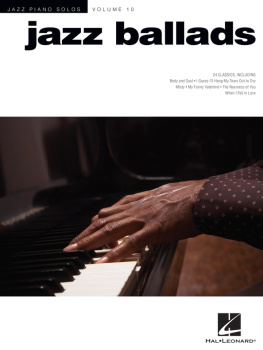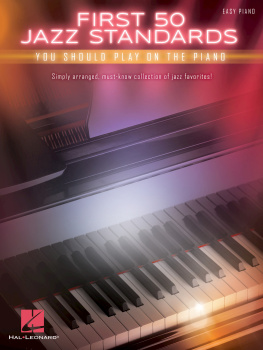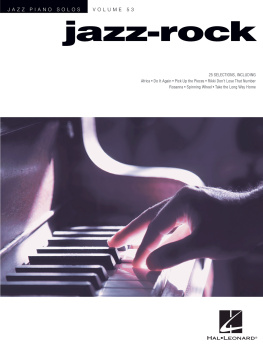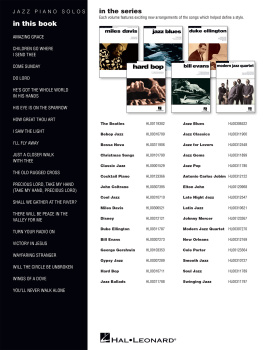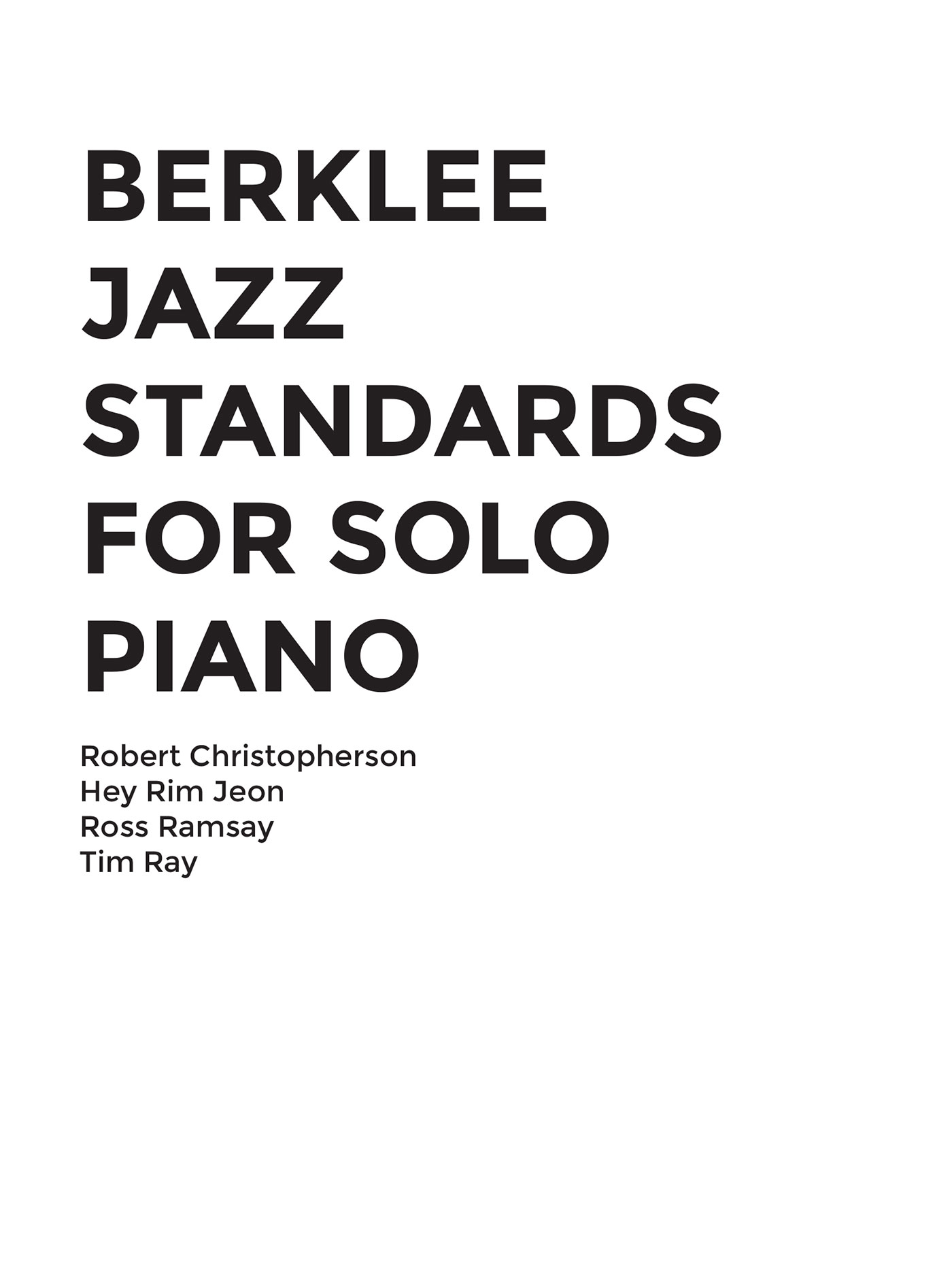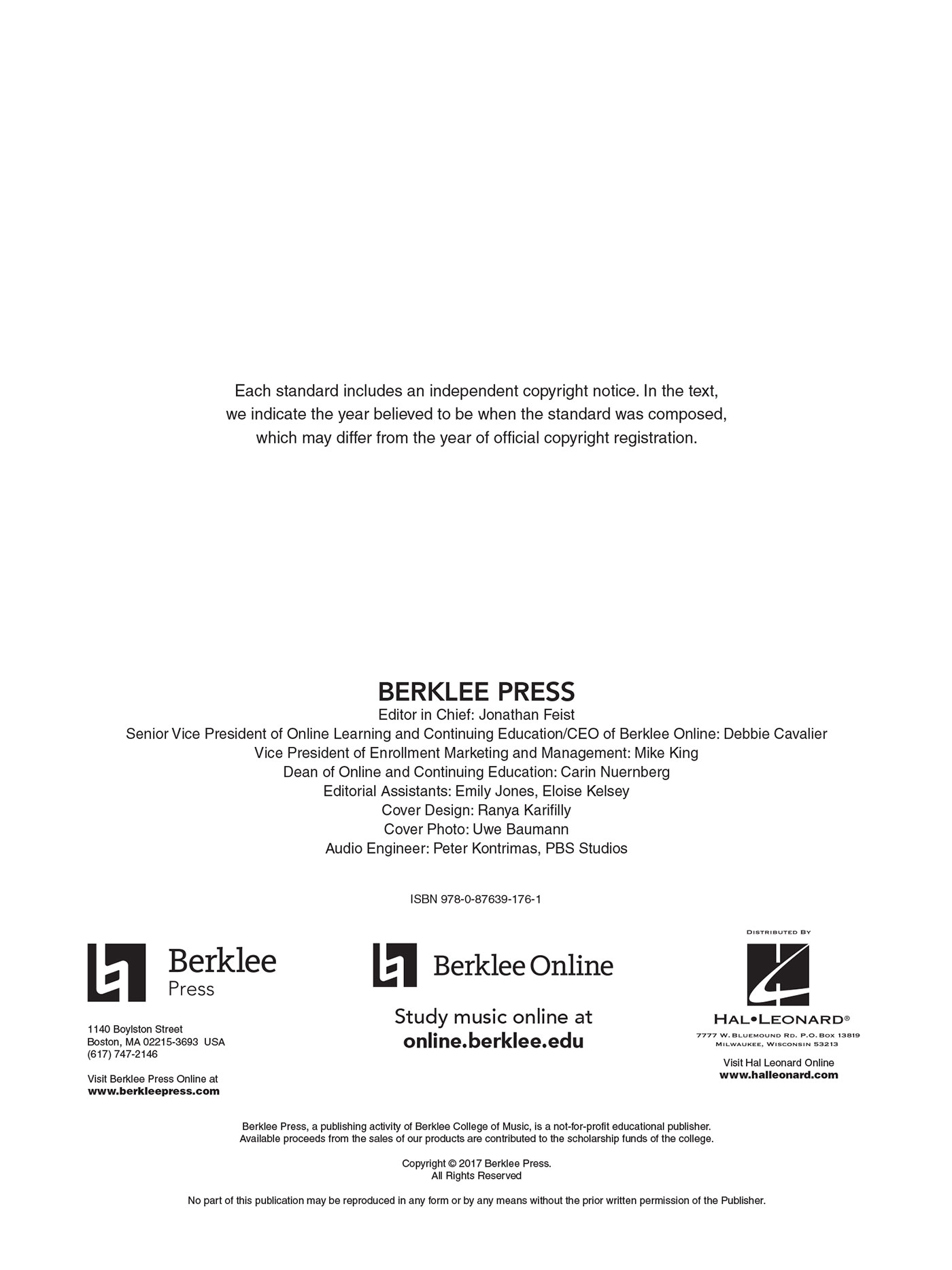Contents
Foreword
By Stephany Tiernan, Chair of the Piano Department,
Berklee College of Music
By Stephany Tiernan,
Chair of the Piano Department, Berklee College of Music
The jazz piano arrangements in this book are like improvisations frozen in time. A jazz pianist begins with a lead sheeta melody and chord symbolslistens to recordings of the tune, maybe even learns the melody and sings it a bit, and then ultimately makes a myriad of musical choices in order to create a unique musical expression that fuses the artistic personality and skills of the pianist/arranger with the soul of the tune. Harmonies can be changed with reharmonizations, melodies can be changed with syncopations and ornaments, but the tune itself should be recognizable, despite the pianists transformations.
In order to do that, a good solid foundation in the jazz harmonic vocabulary is important. Even more important, listening to recordings and playing with others is vital to the process of developing your own voice and personality when you recreate these jazz standards. These twelve piano arrangements illustrate the use of basic textures and harmonic vocabulary that are considered indispensable to jazz piano playing. Understanding this theory and context is required of every piano student at Berklee.
The four Berklee faculty members who have contributed these arrangements would likely play them differently every time. A written arrangement represents just one possibility out of an infinite number of possibilities. And each piece has the stamp of the personality of its arranger, despite our pedagogical attempts to make the tunes clear and accessible.
The piano can be played as a solo or as an ensemble instrument, and it has a long history of both. All of our students at Berklee must become versed in the use of the harmonic vocabulary and textures used in both kinds of piano playing.
For teaching purposes, we describe different levels of approach as four different levels of textures and complexity.
Level 1. Chords voice-led in the left hand (no tensions), melody and/or improvisation in the right hand.
Level 2. Chords voice-led with tensions in the left hand, melody and/or improvisation in the right hand.
Level 3. Chords voice-led in the left hand, melody with coupling notes in right hand; or, bass activity in the left hand, melody harmonized in the right hand. Continued use of tensions.
Level 4. Basic open-voicing techniques for harmonizing melody. Continued use of tensions.
In levels 1 and 2, the pianist is acting more as a member of a rhythm section, though the arrangements in this book at these levels have been crafted to be stand-alone solo piano performances. Ordinarily, at these levels, there is a bass player for the bass line and a drummer for keeping time and giving shape to the rhythmic features of the tune. Often, the melody is played by another instrument as well. This means that the pianist needs to comp the chords with the left hand and leave the right hand somewhat free for melodic improvisation. Now, there are many other roles both hands can play, but the basic texture that is predominantly used in jazz ensemble playing is one that uses the left hand for voice-leading the chords and the right hand for melody and/or improvisation. We recommend learning the chords first without tensions, focusing on playing with good voice-leading and developing a rhythmic feel. Then, in level 2, it is easier to add tensions to the chords, using the same textures.
In levels 3 and 4, the textures used are particularly useful for solo piano playing. Most people think these levels are more challenging, both technically and musically. You begin to add more bass activity, harmonize the melody, use more open or spread voicings, and discover ways of playing piano that take on more of the responsibility for bass lines, melodic harmonization, and rhythmic feel.
This books arrangements are completely notated, presented so that you can see a snapshot of a possible arrangement of a given standards notes and rhythms, for the purpose of analysis and performance. You can then experience the four textures and begin to be aware of ways to make your own musical choices within this framework of textures for different musical settings.
Each arrangement begins with a short introduction to focus your attention on important aspects of the arrangements and gives you useful technical and theoretical information to enhance your understanding of the pieces. But, jumping in and just playing them will be your most direct way to learn from them and prepare you to invent your own versions of the tunes.
Improvisation is the essence of jazz piano playing, and all your musical choices should ultimately be fresh and spontaneous every time. We hope you enjoy playing and analyzing these piano arrangements and experimenting with other tunes to create your own versions of jazz standards!
These recorded performances are interpretations of the written arrangements. They contain occasional embellishments, fills, and solo choruses not indicated in the notation.
The chord symbols in these arrangements do not include tension labels, though you will hear them in the recording and see them in the staff notation. In jazz, tensions are freely utilized to enhance the sound of the basic chord quality. We indicate only the essential chord symbol in most cases, with the understanding that tensions can be used in accordance with each individual performing artists preferences.
Level

By John Lewis
Arranged by Robert Christopherson
Afternoon in Paris is a jazz standard written in 1955 by John Lewis. A jazz pianist, composer, and arranger, Lewis worked with the likes of Dizzy Gillespie, Charlie Parker, and Miles Davis, to name a few. He was the leader and founder of the legendary group the Modern Jazz Quartet.
The song form is AABA, the time signature 4/4, and it is in the key of C.
Some of my favorite piano recordings of this song are by the Kenny Drew Trio from the album Afternoon in Europe and the Cedar Walton Trio from the album Manhattan Afternoon . Be sure to listen to the original recording by John Lewis, Afternoon in Paris .
This arrangement is based around the level 1 or 2 requirements for the Berklee piano proficiency. While level 1 does not require the use of tensions, it is difficult to get a jazz sound without them. Therefore, I recommend including tensions when playing jazz standards. The style for levels 1 and 2 requires an arrangement with chords voiced in the left hand and melody in the right hand.
At all times, from your first recital to a professional performance, the ultimate goal is to tell a story through the musicto take the listener on a journey. A complete arrangement should include an introduction and ending. Also, the use of dynamics, articulation, phrasing, and pedaling are always required for beautiful playing.

